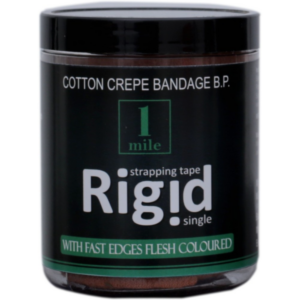DIAPERS + CREPE BANDAGE
Diapers: I’m sorry, but there is no drug called “Diapers.” It seems like you may be referring to a product used for infant hygiene rather than a medication. Diapers are commonly used to absorb and contain urine and feces in infants and young children who are not yet toilet-trained. They are disposable or reusable absorbent garments worn around the bottom and groin area.
If you have any other drug in mind for which you would like information, please let me know, and I’ll be happy to help.
Crepe Bandage: Crepe Bandage is not actually a drug, but a medical material used for external support and compression. It is a stretchable bandage made of woven cotton or synthetic fabric, with a crinkled or crepe-like texture. Crepe bandages are commonly used to provide support to sprains, strains, or weak joints and muscles.
The mechanism of action of crepe bandages is simple. When applied correctly, the bandage exerts gentle pressure on the affected area, helping to reduce swelling, immobilize the injured joint or muscle, and provide stability. This can promote healing and prevent further damage.
The dose of crepe bandage depends on the size and application required. They come in various lengths and widths to accommodate different body parts. Typically, a healthcare professional or pharmacist will guide you on how to properly apply and adjust the bandage for your specific injury or need.
As crepe bandage is not a drug, it does not have specific side effects. However, incorrect application or excessive tightness may lead to discomfort, restricted blood flow, or skin irritation. It is important to ensure that the bandage is not too tight and that it is not applied over an open wound or infected area.
If you experience worsening pain, numbness, tingling, or any other concerning symptoms while using a crepe bandage, it is important to seek medical advice.

